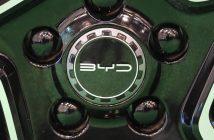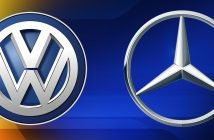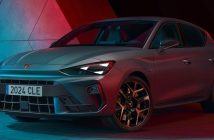+++ The new BMW 5-SERIES is a significant moment in the model’s 52-year history, being offered in ‘i5’ all-electric guise for the first time. Now the range is set to grow again with the arrival of the i5 Touring. BMW has recently shared a few teaser videos of the i5 Touring, which will be revealed in spring 2024 according to the German brand. I’ve seen it testing plenty of times and I expect that it won’t look different from the saloon version, until you reach the back end that is. These latest teasers confirm that the rear lights are bespoke to the estate, with a slightly different signature to the saloon’s.
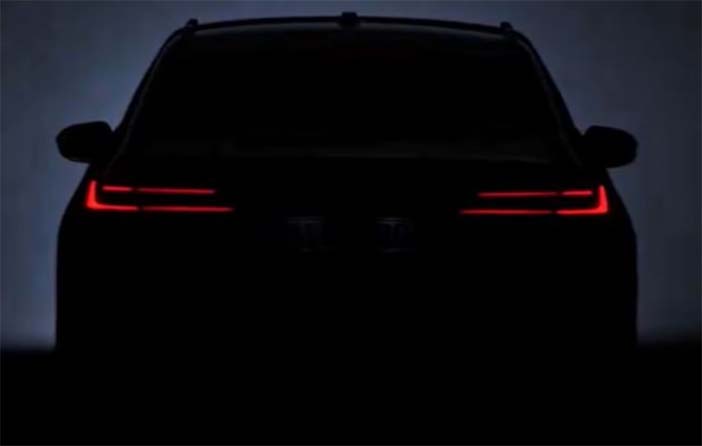
The ‘M Model’ BMW refers to is the M60 variant, which will receive the same exterior tweaks as the M60 saloon. As we’ve seen in previous teaser images, the angle of the rear window also looks more rakish than on the outgoing G31-generation 5-series Touring. The front end of the i5 Touring will feature a blanked-off grille for improved aerodynamics, but overall it’ll look familiar to the internal-combustion engined 5-series. I expect the i5 Touring’s lineup to mirror the saloon’s. That means we’ll see a rear-wheel drive i5 eDrive40 at the bottom end of the range. In the saloon the eDrive40 comes with a single rear-mounted electric motor with 326 hp and 430 Nm of torque. Power comes from an 81.2 kWh battery, which is enough for a 0-100 kph time of 6 second flat; the Touring’s extra weight will probably bump this acceleration figure up slightly. The i5 eDrive40 Touring should also return a marginally lower range than the sleeker saloon’s 582 km. There’s no reason why the charging speed of 205 kW won’t remain the same with a 10-80 per cent recharge taking 30 minutes. BMW’s boss of M division, Franciscus van Meel has said the hot M60 xDrive Touring range-topper will arrive in the spring. It’ll offer M5-rivalling performance from a dual-motor four-wheel drive powertrain with 601 hp and 795 Nm of torque coming from the same 81.2 kWh battery as the eDrive40. 0-100 kph takes just 3.8 seconds in the M60 saloon with a top speed of 230 kph. BMW claims a maximum range of 516 km for the M60 i5 in saloon form so a figure nearer 500 km is likely for the hot estate. The interior of the Touring will also share its layout and technology with the all-electric saloon. We’ll see a 12.3 inch driver’s display and a curved panel connected to it on the dash featuring a 12.3 inch touchscreen with BMW’s latest iDrive infotainment system. The outgoing 5 Series Touring has one of the biggest boots of any estate with 570 liters. We’re yet to see the boot capacity for the upcoming 5 Series Touring but in saloon form there’s no difference between the new ICE 5-series and the EV at 490 liters. +++
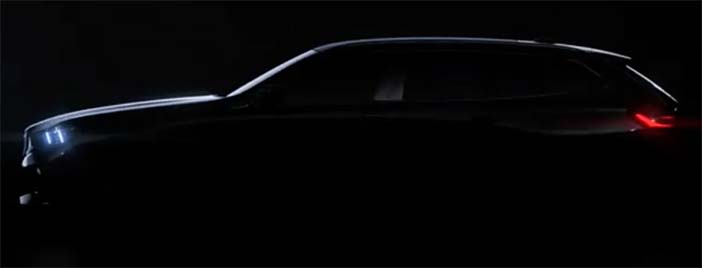
+++ BYD plans to end production of the pouch-type batteries used in its best-selling hybrids as the automaker seeks to address durability concerns and the risk that they could leak, said three people familiar with the matter. The world’s top seller of battery-powered cars last month began converting production lines for pouch-type cells in 2 of its factories situated in Shaanxi and Zhejiang provinces to produce prismatic batteries instead, said one of the people, who had direct knowledge of the matter. It is still making pouch-type cells at a third factory in Qinghai province to minimize disrupting production of its hybrid vehicles, which accounted for almost half of its global sales last year, but plans to switch that too and completely stop using pouch cells by early 2025, the person said. The battery uncertainties reveal the challenges BYD faces in its core home market, where most of its hybrid vehicles are sold, even as it looks to take on Tesla on the global stage by boosting exports. No cases of battery leakages from BYD cars have been reported by the automaker or Chinese regulators to the public. But BYD and some industry experts believe that pouch-type batteries, where the cells are wrapped in a thin metal bag made of aluminum laminated films, have a higher chance of leaking electrolytes, said the 3 sources. In extreme cases, leaking electrolytes could cause the battery to burn or explode, they said. Some rival automakers have already highlighted the risks of pouch-type batteries. Volkswagen said in 2021 it was moving away from such batteries, while Tesla CEO Elon Musk has said that the company “strongly recommends” against their use, given that the probability of a jump in battery temperature was “dangerously high”. In 2022, BYD recalled more than 60,000 units of its Tang DM-i hybrids that used the pouch-type batteries. The recall plan that it reported to the regulator cited a battery pack defect that could cause a “thermal runaway”. Electric and hybrid vehicles use 3 main types of batteries: cylindrical, prismatic and pouch type. The first 2 are encased in hard materials. Widely also used in personal computers, tablets and other consumer electronics, pouch batteries are lighter, but are at risk of corrosion and could be vulnerable in crashes. BYD unveiled in 2021 its self-developed hybrid technologies including a blade-shaped battery pack containing pouch cells which it said could achieve a higher charge and discharge efficiency specifically required by plug-in hybrid (PHEV) cars. It uses such batteries in all of its PHEV models, which made up 48% of its total car sales of 3 million units in 2023 and are almost all sold in China. BYD does not source batteries externally, and the batteries it makes are mostly for its own use. The automaker plans to replace the pouch batteries in its PHEVs with a type of prismatic battery known as “Short Blade”, which is similar in structure to the Blade battery it uses in pure electric vehicles with stacked foils but is shorter in length, one of the sources said. BYD sold 98% of its hybrid cars at home last year, and eight of the 10 top-selling plug-in hybrid cars in China, according to data from the China Association of Automobile Manufacturers. It exported only a small number of the Song, Qin Plus and Destroyer 05 PHEV models, which use the pouch batteries, to markets such as Brazil. The financial impact on BYD from the production switch could not be immediately determined. BYD posted record third-quarter profit of 10.41 billion yuan ($1.45 billion), 82.2% higher than last year, on revenue of 162.15 billion yuan. China’s Ministry of Industry and Information Technology and the State Administration for Market Regulation did not respond to requests for comment. Prismatic batteries pose their own challenge for PHEVs, including the risk of overheating, battery engineers have said. In China, SVOLT, the battery maker backed by Great Wall Motor, has been making short blade-shaped prismatic batteries used in popular PHEV models such as Geely’s Galaxy L7 and Great Wall’s Haval Xiaolong. +++
+++ General Motors’ CADILLAC division is ramping up production of its Lyriq electric SUV now that more batteries are available and as demand for luxury EVs remains strong despite a slowdown for other types of EVs, a senior executive said. Production of the Lyriq has been far behind initial targets, hamstrung mainly by an issue with assembling battery modules that has crimped GM’s EV plans. But Cadillac delivered 9.000 Lyriqs in 2023, according to a media briefing by its global vice-president John Roth. The luxury brand had delivered fewer than 2.400 in the first half. “It’s been a measured buildup and launch as battery modules have become available, and now that we’re in a position with strong inventory, we’re seeing great sales performance”, Roth said, adding he had “high expectations” of that continuing. The Lyriq now accounts for a quarter of all of Cadillac’s sales, up from just about 12% in the 4th quarter of last year, he said. “The luxury industry is I think operating at a little bit of a different level than the main market as it relates to EVs. We still see in the data, 60% of the consumer base, that their next luxury vehicle will be an EV”. High borrowing costs have dented consumer sentiment and several companies have warned of a slowdown in demand for EVs. Many, including market leader Tesla, have cut prices sharply to woo potential customers. Lyric was one of a number of EVs that lost a U.S. government tax credit this month as new sourcing guidelines kicked in. GM is offering incentives of $7.500 to offset the loss and has said Lyric would regain eligibility early this year. Cadillac has been bolstering its EV lineup, aiming to offer a fully electric portfolio by 2030. +++
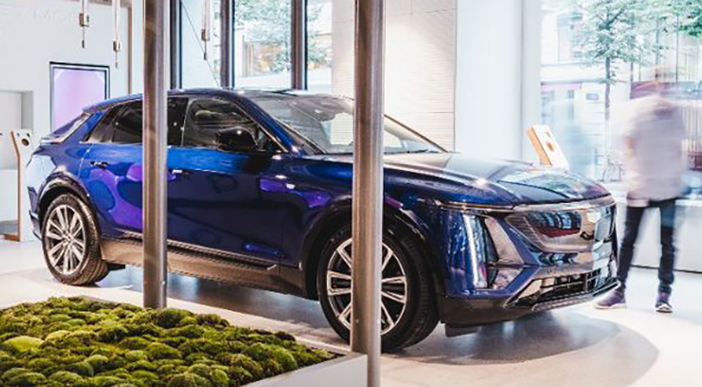
+++ The CONSUMER ELECTRONICS SHOW is always a good event, especially with an increasing number of car makers using it to make big announcements. What always amuses me is how many of them proudly show off their new tech, proclaiming it as a world first, without realizing their rivals in the next hall are showing off exactly the same thing! For example, coming to a car near you very soon is greater AI integration, often in the form of ChatGPT. It’s supposedly going to make it easier to talk to your car, although judging by my demo in the next-generation Volkswagen Golf it still needs some work. However, car makers don’t agree on everything, as was clear with Volkswagen and Honda. VW’s tech boss Kai Grünitz told me: “In the past we tried to develop a kind of world car suitable for every region: take a look at the ID.4. But the last years have shown that this won’t work any more. I think you can have the same electronic architecture in the background, but the design, the way our customers react with the car will be different. And actually we have also learned that it’s not much more expensive to design different cars as long as you use the same modules in a way that the customer doesn’t see it”. On the other side of the show (and coin), Honda was unveiling its stunning new global 0 Series EVs, a shift in strategy from its current regional line-ups. So who’s right? I asked Honda’s CEO, Toshihiro Mibe. “We are thinking that the value of the business will change and we need to have a number of models to achieve volume”, he told me. “In an EV world we have to reduce the number of platforms. Going global is the most efficient for EVs. Let’s talk about Tesla: 4 models globally. We agree with that”. The desire for Far Eastern buyers to have more screens, tech and shiny gadgets doesn’t necessarily chime with western buyers. Let’s see if tastes converge. +++
+++ When Mark Twain read his mistakenly published obituary, he quipped: “Reports of my death are greatly exaggerated”. A century later and the INTERNAL COMBUSTION ENGINE could very well echo this sentiment, finding itself in a similar position of being prematurely written off. Since the world’s first mass-market electric vehicle was launched, the Nissan Leaf, in 2010, a dominant narrative has emerged, suggesting the demise of the internal combustion engine is nigh. While I have no doubt that electric vehicles will become the dominant mode of transport for most, I am confident that our beloved internal combustion engine still has a significant role to play in our future. The idea that the ICE is dying is myopic. It also overlooks the significant role ICEs can play in transitioning speciality vehicles (such as sports cars and HGVs) to cleaner transport, especially through the introduction of e-fuels and hydrogen. The ICE has been a mainstay in automotive innovation for over a century. Its endurance is testament to its adaptability and the extensive global infrastructure that supports it. While I have no doubt electric vehicles will become and already are crucial for decarbonisation, they are not without downsides. And we’re seeing that reflected in the strategies of some automakers around the world. Just as Nissan was at the forefront of the EV revolution, today some Japanese automakers are notably placing their bets on a combination of internal combustion engines and e-fuels as a key component in the future of mainstream automotive technology. This approach stems from a pragmatic assessment of Japan’s unique energy and infrastructural landscape, but I’d argue, is a misguided view of the future which will leave Japan’s roads isolated from global trends. Much in the same way we have seen with kei-cars, small vehicles designed for urban areas that haven’t caught on outside the Japanese isle. The logical and pragmatic use of synthetic fuels will be in vintage, sports and enthusiast cars, as well as in HGVs and in off-road applications, as championed by the likes of Porsche. These applications have been deemed admissible in the European Union as a way of reaching net zero. The commercial and technical merits of e-fuels are plenty. E-fuels offer a higher energy density than current battery technologies, leading to longer ranges and shorter refuelling times; 2 limitations of EVs. Additionally, the existing fuel distribution and service infrastructure can be utilized with minimal modifications, dramatically reducing the transition costs compared to the overhaul required for EVs. But e-fuels, just like EVs, aren’t perfect. Producing e-fuels is energy-intensive and they produce small amounts of NOx/air pollution when the exhaust gases are discharged, though improving the efficiency of this process is a key area of ongoing research. Advances in renewable energy technologies and electrolysis are reducing energy costs, making e-fuels more feasible and therefore allowing this alternative technology to challenge EVs when the viability of EVs reaches the edges of what possible and practical. This is welcome from a Darwinistic perspective, where the challenges make both EV and e-fuel species stronger in the ultimate fight for survival. In conclusion, the narrative that the ICE is an obsolete technology, incompatible with a sustainable future, is a reductionist view that underlooks the potential of e-fuels. As we navigate the complexities of the global energy transition, exploring and investing in a range of solutions is imperative. The ICE, in partnership with e-fuels, offers a viable, efficient, and innovative path forward in our quest for cleaner transport. They often say that technologies reach perfection just before obsolescence. Well, it’s my view that the ICE could and should be perfected further still. +++
+++ MERCEDES-AMG has a wide range of cars these days spanning from the likes of the A 35 hot hatch all the way up to the GT 63 super saloon and somewhere in between the AMG engineers have managed to take the 7-seat GLB and give it some real performance upgrades. 2023 saw Mercedes’ AMG division launch some major new cars within its portfolio with the new AMG GT, CLE 53, GLC 63 and the AMG-developed SL. The Mercedes GLB might not be the most obvious choice to be given the AMG treatment, but hot SUVs are rather fashionable right now and with seven-seat practicality, the GLB 35 could have all bases covered. Just 1 trim level is offered on the GLB 35 as it stands and there are no plans for a hotter 45 variant like the A 45 hot hatchback. As we saw with the facelifted A 35 that was launched in 2023, the GLB 35 gets the same engine, mated to a new mild-hybrid unit. 306 hp and 400 Nm of torque remains the same as before, sourced from a 2.0-litre turbocharged 4-cylinder petrol engine and a 48 volt mild-hybrid (MHEV) system adding 13 hp for short bursts and to help power the car under coasting. Power is sent through a 7-speed automatic transmission to all 4 wheels. Despite this, the GLB 35 facelift is slower over the 0-100 kph sprint by 0.2 seconds, taking 5.5 seconds in total. Emissions are unchanged at 207 g/km of CO2. The GLB 35 is pretty well equipped. As standard there’s of course the AMG bodykit with a restyled front bumper, new headlight and rear light signatures and to the rear, twin single-exit exhaust tips. On the old car, 19-inch wheels came as standard but now the 20-inch rims are standard-fit. The interior sees a couple of changes with the latest MBUX software added to the twin 10.25-inch screens on the dash. There’s a new wood trim that’s optional, but overall it’s the same cabin as you’d find the old model: still equipped with a seven-seat layout, making the GLB 35 a rather niche offering. An electric panoramic sunroof, wireless phone charging, head-up display and 360-degree camera are all standard features. +++
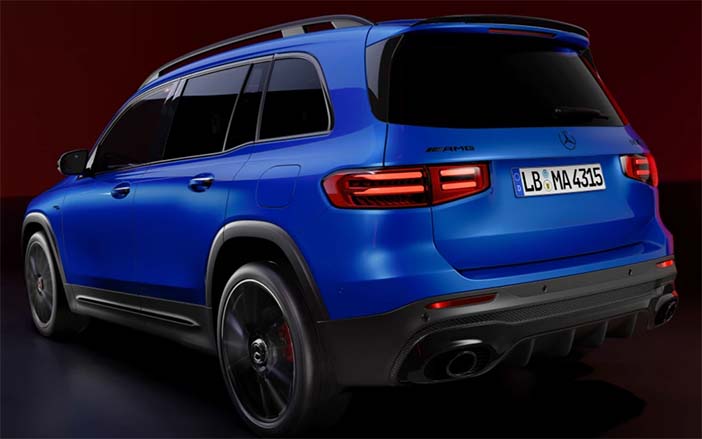
+++ The RENAULT CLIO is poised to return for a 6th generation alongside a new Captur (as well as the electric 4 E-Tech and 5 E-Tech) as part of a renewed assault on the critical B-segment market in Europe. The Clio was updated in 2023 with a new look, revised trim structure and improved technology, and Autointernationaal.nl understands that Renault is likely to heavily update the current, fifth-generation car again in around 2 years’ time. Beyond that, plans are taking shape to introduce a completely new model in the second half of the decade that will take the Clio name into its fifth decade with a bold new look and highly advanced interior technology, but it will have a rigid focus on affordability, and still be powered by petrol. Renault product performance boss Bruno Vanel outlined the brand’s plan to renew its line-up of entry-level cars, now that it has fleshed out an expanded range of larger, C-segment models, comprising the Mégane, Scénic, Austral, Rafale and Espace. Those models are important, he said, because of the huge popularity of such cars in Europe and the higher margins they can command, but “it doesn’t mean we’ll forget about the B-segment”. He pointed to the upcoming 4 E-Tech (a crossover) and 5 E-Tech (a hatchback) as evidence of Renault’s commitment to small cars but he was quick to suggest that neither is intended as a replacement for the brand’s 34-year-old hatchback. “The Clio is a brand in itself”, said Vanel. Renault’s recognition of the importance of the Clio name ties into its decision to also retain the Mégane, Scenic and Twingo monikers as it electrifies. The Clio’s future had looked uncertain beyond the current generation, given the upcoming arrival of the similarly sized 4 and 5 EVs in 2024, and the electric Twingo is planned to roughly match the Clio for price when it comes in 2026. But Vanel said keeping the small petrol hatchback is important because it provides customers with choice, while ensuring Renault does not abandon a large proportion of its customer base as it introduces a range of more costly EVs. The Mégane E-Tech hatchback, for example, is two third more expensive. “We are not moving directly towards 100% electric”, said Vanel. “We are doing it step by step, to have this transition with hybrid cars so that we remain an affordable brand”. Facilitating this push for affordability is the fact that Renault is able to sell combustion cars until 2035 in the Europe. As a result, the new Clio is set to be sold with an evolved version of the petrol-electric E-Tech powertrain used in the current car, combining a 3-cylinder engine with an electric motor, a starter-generator and a small-capacity battery for low combined emissions and the ability to drive small distances with the engine off. No doubt the need to reduce emissions across its line-up will mean Renault phases out the cheapest, pure-petrol variant of the Clio for the next generation. Logically, the fact that Renault’s CMF-BEV platform for small electric cars is so closely related to the Clio’s CMF-B architecture means there is potential for an electric derivative down the line, but Autointernationaal.nl understands it is not yet planned. The brand will need to carefully consider the Clio’s positioning if it is to become part of its EV range alongside the 4 and 5. Vanel said the firm ultimately wants customers to decide whether to make the switch from the Clio to the 5. He said: “We want to make it an easy decision, but we want them to make the decision when they are mature for that and when the market is mature: when there are enough charging stations and it’s reasonable to do so”. Renault Group CEO Luca de Meo is a vocal advocate of small, affordable cars. Speaking recently in his role as chairman of European motor industry body ACEA, he rallied against the increasing difficulty of selling such cars profitably, because safety and emissions regulations have driven up production and development costs to unprecedented levels. “A- and B-segment cars are not profitable any more because auto makers have to produce cars dressed up like Christmas trees,” he said. “It doesn’t make a difference if it’s a Clio or a big limo”. The Clio’s cause will have been helped in this regard by 2 significant regulatory developments: the EU’s and the UK’s decision to allow new combustion car sales for another 11 years and, just as importantly, the slackening of impending Euro 7 emissions rules. It has already been suggested that the fate of 2 of the Clio’s biggest rivals, the Skoda Fabia and Volkswagen Polo, was contingent on Euro 7 requirements being relaxed. Initial proposals for the rule set would have imposed such heavy production costs on the cars that the margins would have made them unviable. No doubt Renault bosses also see an opportunity to carve out a bigger share of the supermini market now that the once-dominant Ford Fiesta has been retired. Crucial to the success of the Clio will be Renault’s ability to maintain competitive structures; an endeavour that, said Vanel, will focus less on outright total cost and more on monthly payments. “We will try to keep the affordability of the monthly rentals”, he said. “If you compare the rentals in 2018/2019 to 2022, with the improvement of residual values and even with some price increases, I think we experienced quite a good performance there, which kept the affordability safe. This is something which we are looking at a lot, so that for the customers, the monthly rentals (leasing or whatever) remains quite stable, or in the same region”. Vanel also suggested that avoiding discounting (in line with Renault’s ‘value over volume’ ethos) is also playing a role in supporting strong residuals, thereby keeping monthly payments stable. Vanel hinted at plans to introduce much more flexible payment schemes (potentially on a per-use basis) for the Clio and other future Renault models, via new mobility brand Mobilize. He said: “That’s what people expect. Mobilize has acquired a company. Lease&Co, which is exclusively focused on subscription schemes, so that’s something which we are definitely in. We try to give more flexibility to our customers going forward: leasing solutions for the moment, but exploring with this subsidiary the way we could go for more flexible schemes”. +++
+++ Much has been written about the demise of SEAT as a car-making brand amidst the rise of its Spanish sibling Cupra. Yet although Volkswagen Group bosses have gone on record in the past, describing the future of Seat as a ‘mobility brand’ rather than a car maker, that could be about to change. Marcus Gossen, brand director for Seat and Cupra in the United Kingdom, said: “Seat has to be accessible; it should be the entry level to the group. We have exciting news coming for Seat”. However, Gossen was quick to dismiss the idea that Seat could be developed into a cut-price rival to Groupe Renault’s successful Dacia brand, but he did confirm that Seat would still be selling cars as far into the future as 2029. Volkswagen brand boss Thomas Schafer, who’s also responsible for Seat, Cupra and Skoda, has confirmed that the group is developing a small, cheap, all-electric car that’ll be sold for less than €22.000 in the Netherlands. However, he has also said that the technology will need to be shared with other brands, with Seat being an obvious choice. While further details remain under wraps, Seat’s annual press conference in March could be the ideal time for an announcement. Indeed, at last year’s event, Seat and Cupra’s global boss Wayne Griffiths said: “We cannot electrify both brands at once. Seat and Cupra complement each other during the transition phase”. He also insisted: “We don’t need to decide the future of Seat today”. Aside from the possibility of an entry-level EV, there are currently no plans for any new Seat models to be launched, with the brand focusing on the existing range of petrol and plug-in hybrid models including Ibiza, Leon, Arona, Ateca and Tarraco. Meanwhile, Cupra will be adding to its five-strong line-up with the Tavascan EV and Terramar plug-in hybrid both joining the range this year. +++
+++ The SSANGYONG name is dead, after the Korean carmaker was rebranded as KGM not too long ago. Now the company’s model line-up has been overhauled to clear the way for the launch of some all-new cars in 2024. Changes to the existing KGM model range include updated specifications for the Tivoli, Korando and Rexton SUVs and a new trim structure for all three which uses unified alphanumeric names. For instance, the Tivoli and larger Korando are now available in K30 or K40 trim, meanwhile the 7-seater Rexton can be had in K30, K40 or K50 trim. However the Musso pick-up has retained its established arrangement of EX, Rebel, Saracen and Saracen+ specifications. The Korando e-Motion (the brand formerly known as SsangYong’s first EV) is not so lucky and has been quietly dropped from the range. KGM has also detailed its new “Powered by Toughness” design philosophy that will be applied to its future offerings, as part of an effort to change the brand’s image and move beyond what it says is “the outdated perception centred on ‘value for money’ SsangYong had become known for”. All of the company’s existing dealerships are due to be rebranded as KGM Motors outlets by the middle of 2024, and the brand has a new slogan, too: “Go different. KGM”. But SsangYong’s familiar dragon-wing logo is sticking around. The extensive rebranding comes after SsangYong was bought by Korea’s KG Group in 2022, saving it from liquidation. Initially, SsangYong was going to be relaunched as ‘KG Mobility’, however the firm changed tack not long after, electing instead to use the simpler ‘KGM’ name in Europe. The full KG Mobility brand name is being used in Korea. The company’s first new model is the KGM Torres in all-electric EVX form. It will offer a WLTP range of up to 460 km. More details, including pricing, should be announced soon. KGM is also developing 2 more electric SUVs (a mid-sized model and a large SUV) plus an electric pick-up that’s being developed with the help of Chinese giant BYD, which sold more than 3 million cars worldwide last year alone. All 3 of these as-yet-unnamed KGM models will use dedicated EV platforms. The pick-up truck is slated to arrive before the end of 2024, while the 2 new SUVs will follow in 2025. +++
+++ VOLVO remains confident of “tremendous growth” in the electric vehicles market, CEO Jim Rowan told, countering gloomier projections from rivals. The carmaker, which aims for electric vehicles (EVs) to contribute half its sales volume by mid-decade and to sell only EVs by 2030, said the growth in demand for its premium brand was stronger than that of mass-market rivals. “We have much more pricing power and people have got more disposable income so they can afford it if they want to drive an EV”, Rowan said. The Volvo Cars CEO said that, in contrast to others, he saw good growth globally for electric cars, with particular strong demand in Europe. Over the past year, many automakers have warned that the anticipated growth of EVs has been slow to emerge due to poor demand, heavy price cuts, lower subsidies, and supply chain issues. Volvo has previously said that it has no intention of participating in the Tesla-ignited price war due to its position as a premium brand and saw good margins on its electric cars. Higher costs caused by disruptions on shipping in the Red Sea would also not affect customers, the CEO said, who stated that any additional costs would be absorbed by Volvo. Last week, Volvo said it would halt production at its factory in Belgium for 3 days as a result of a delivery of gearboxes being delayed due to the disruption. The CEO also told that he had high ambitions for India in the next five years with plans to launch the more affordable EX30 there in 2025. +++

